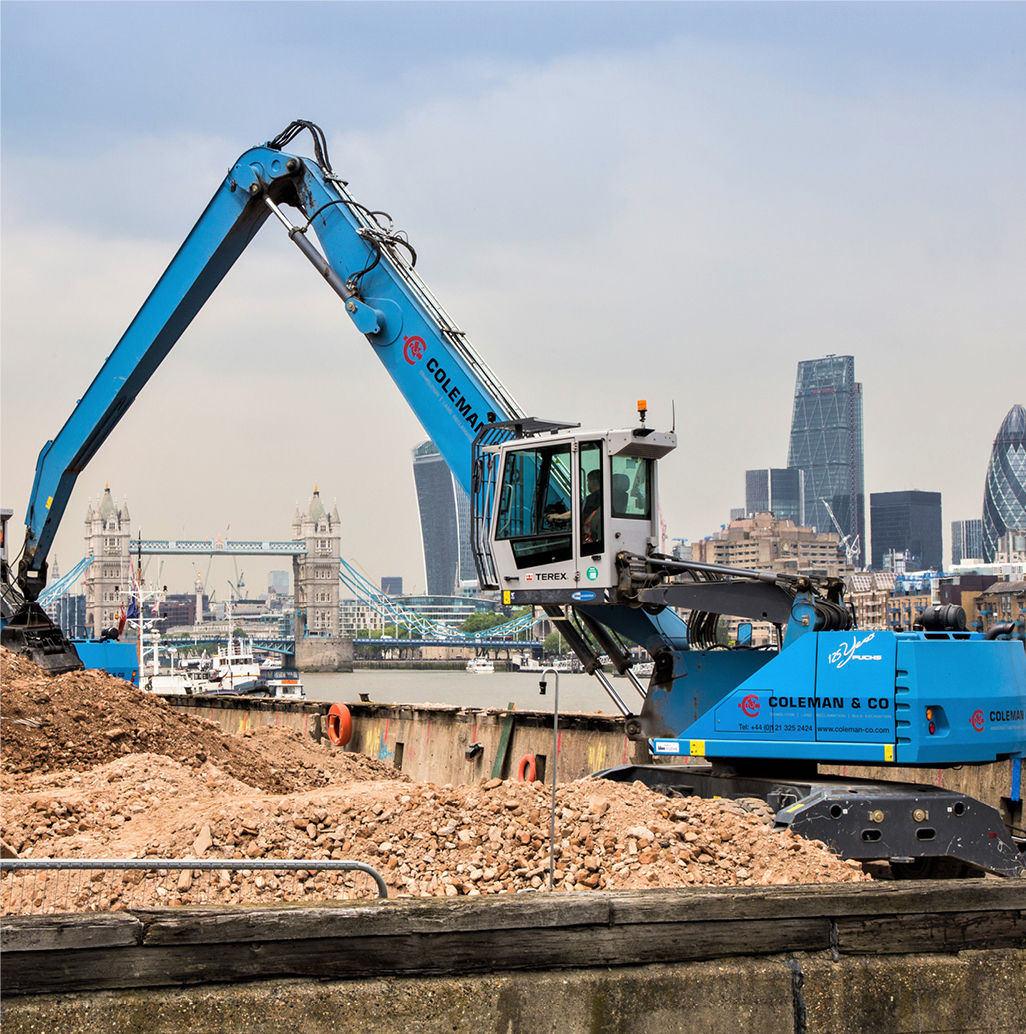An extensive amount of land remediation, demolition and deconstruction work was required to enable the delivery of the Thames Tideway Tunnel (TTT), a major new sewer designed to protect the tidal River Thames from pollution. And the integrated Colemans team of remediation and demolition engineers were the ideal choice to undertake many of those works as part of the £4.5 billion project – one of the biggest infrastructure developments ever seen in London.
The seven-year project saw the construction of a new sewer from West to East London, with land remediation, demolition and carefully considered waste removal all critical due to the nature of the urban sites. Colemans carried out safe demolition of ground structures at five Tideway Tunnel worksites in urban locations across several London boroughs. Our engineers also removed 100% of demolition waste generated, including by river. In total, 25,000 tons of material, found to be contaminated with asbestos, was transported by barge along the River Thames to unlock the potential of individual sites in a environmentally friendly way.
Structures demolished as part of the project included a reinforced concrete office blocks, light clad industrial units, brick and steel-clad warehouse buildings of varying heights, steel clad warehouse buildings, two to multi-storey brick and steel-clad office buildings and steel portal frame warehouse buildings.
A number of challenges were presented due to the scale, location and scope of this project. The most significant challenge was at Chambers Wharf, Southwark, where fragments of asbestos were unexpectedly found among the 25,000 tons stockpile of crushed material and a partially-demolished substation building.
The find threatened critical deadlines and risked putting the project off schedule, but despite a small window of opportunity, Colemans delivered the works on time and in line with restrictions stated in the Parliamentary Approved ‘Development Consent Order’ to ensure the main construction programme could commence on time.
Sustainable land remediation was also a key aspect of the project. Working together, asbestos removal consultants from Colemans and Thames Water established a fully-controlled methodology to protect workers and residents, involving removal via the river Thames to a licensed site in Norfolk. Drawing from our own specialist supply chain and working closely with the Port of London Authority, we used tug-boat drawn 1,000 ton barges to ferry the contaminated 25,000 tons over an intensive four week period, avoiding 1,000 lorry movements through London.
As expected with urban sites along the river, this project also presented challenges and constraints due to close proximity of neighbouring structures or residences, with a number of sites in built-up affluent areas.
Trigger and action levels were set in dust monitors located on-site and mitigation consisted of dampening down airborne dust using atomised spray equipment, water bowsers and hoses. To deal with asbestos risk, we increased air monitoring and used a fibre suppressant when misting.
In total, we removed 40,000 m3 of material with our skilled team of 100 people strong at peak, seven days per week.
The work involved engagement with multiple stakeholders including Local Authorities, The Environment Agency, The Port of London Authority, English Heritage, Transport for London and local residents groups to develop, submit and gain approval for a variety of environmental consents, traffic/logistics plans and River Thames approvals.
Colemans are proud to have demonstrated specialist complex demolition, land remediation and innovative waste-removal capabilities, particularly at Chambers Wharf, where collaboration, trust and leadership were critical to the success of the project.










